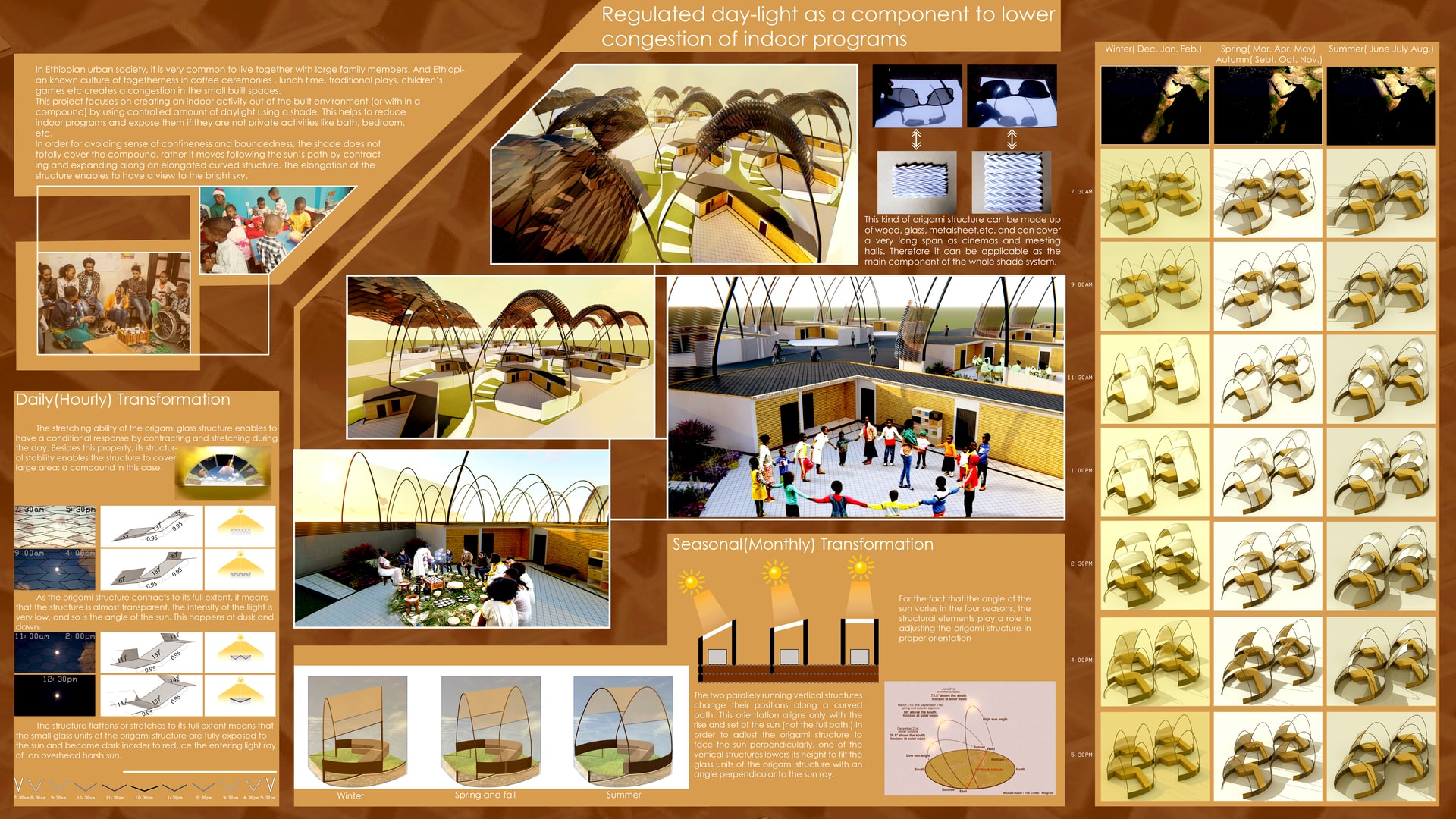Project Description
In urban areas of our country Ethiopia, there is an imbalance in the ratio of built spaces to open spaces. There are small built spaces and wide-open compounds. On the other hand, the urban dwellers' population is very high. This relationship has manifested the living style of the people to have a high density in a given small built area. The tradition of gathering in cultural and ritual activities are resulted in having congested living spaces. Moreover, family meal invitations, coffee ceremonies, family recreations, wedding ceremonies, traditional plays/dances; which would have been more beautiful had they been prepared outside are usually forced to be held indoors. This project, therefore, aims to create a comfortable outdoor environment in the frontages of living spaces in compounds, providing all-time shades for all occasions and all age groups. This situates a wider space for the programs. Thus, the space helps to run the occasions efficiently. To create this environment, the design has considered three main natural phenomena. The first one is the location of the country. Since Ethiopia is located in the tropics (close to the equator), there is harsh and striking sun-ray throughout the year, Therefore the shade necessitates protecting the users throughout the day, all over the year. The second phenomenon is the variable angles of the sun within a day. The angles of the sun-ray increase from morning to mid-day and decrease from mid-day until dawn, and therefore, the dynamic character of angels of the sun rays requires intensive technical arrangement to have full-day shade. The third phenomenon is the variation of the angle of the sun in different seasons. For the inclination of the angle of the sun in the seasons, the shade has to adjust its position to give corresponding protection of the sun rays in each season. There are two measures to enhance the proper positioning of the shade. The first one is by moving the shade system parallel to the path line of the sun along with the elongated parallel curved structure. The structures stand on the borders of the plot and run from east to west. The elongation of the structure constantly increases the openness of the compound and makes the users be at ease, rather than giving a feeling of a tent that imposes a sense of restriction. The other measure is that, rotating the structures on a curved path to set their positions. Besides setting the horizontal adjustment of the structures, the tilting and angular inclination of the path line of the sun following the seasons lets either of the structures lower its height. This allows the roof of the shade to have a perpendicular position against the diagonal sun rays. The design has introduced an origami structure as the main component. It is made up of glass units that have a character of solar eye-glass. It is transparent when the light intensity is low and darkens when it is high. Origami structure has a property of covering a wide area, at the same time maintaining its stability. This makes it a good candidate to use it as a compound shade roof. The glass units are connected with rubber to help them contract and expand easily. This property of origami gives a proper adjustment for the daily variation of the angle of the sun-rays. It contracts in the morning and pulled by two adjusting ropes and reaches its maximum expansion at mid-day and then contracts back again at dawn. There are two main curved structures made of bamboo, a very dominant plant in Ethiopia. It has a high tensile strength that helps to resist pressure. It can also be connected easily, to increase its length. The central hollow of bamboo enables it to pass a rope through it and pull the origami structure in time variation. The origami structure lays on the curved bamboo structure. It moves and adjusts its expansion when pulled from the other end of the structure. One of the structures slightly lowers its height to let the origami structure face the sun in spring fall and winter. Though this project targets to alleviate the problems which we have observed in the cities of Ethiopia, a similar principle can be applicable for activities like home farming, since the sun-ray in tropical areas is harsh and hinders to grow some crops in low lands. It can also be applied as a shelter for people with Photo-sensitivity (sun allergy) which is an immune system reaction that is triggered by sunlight.
